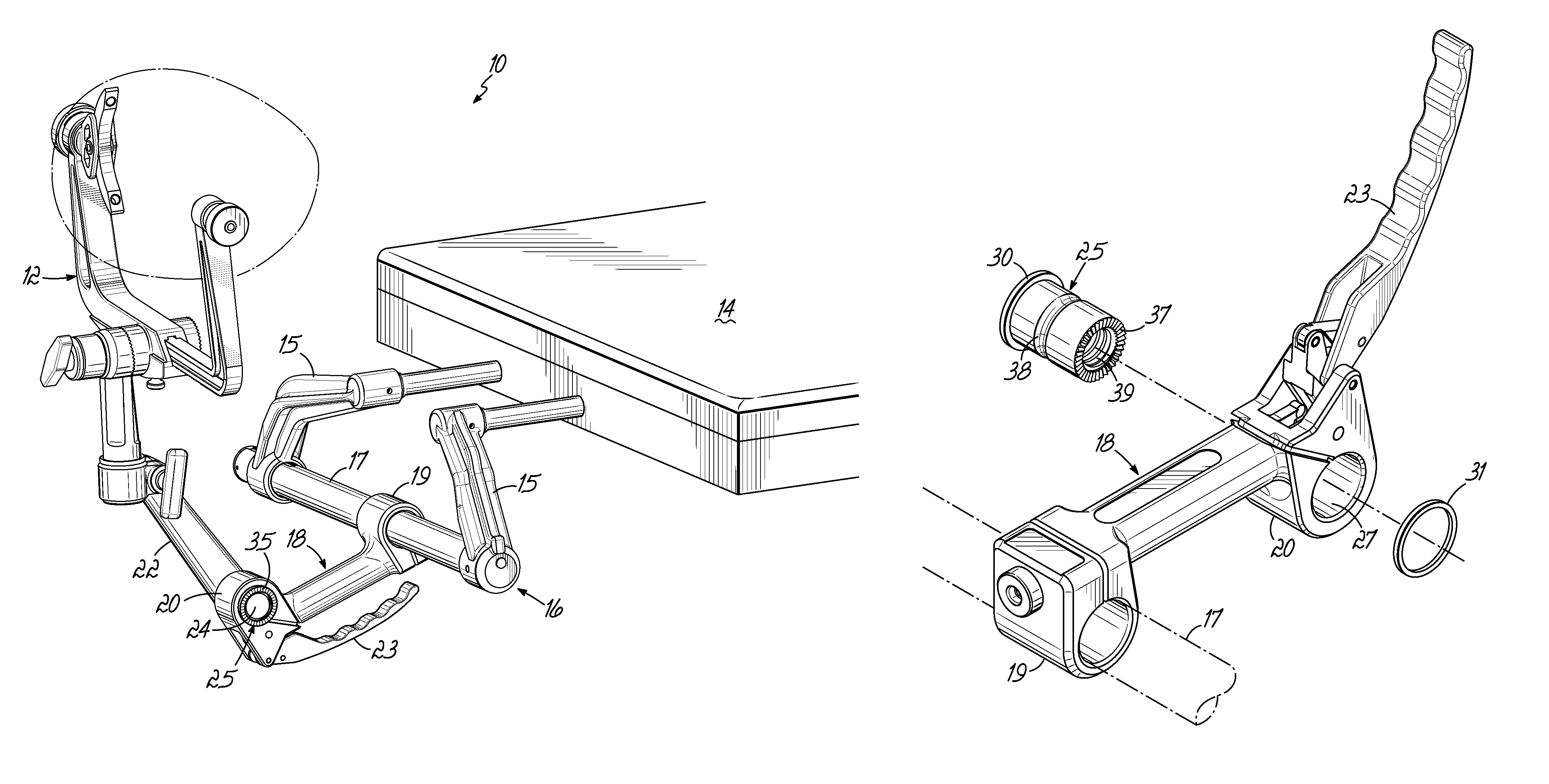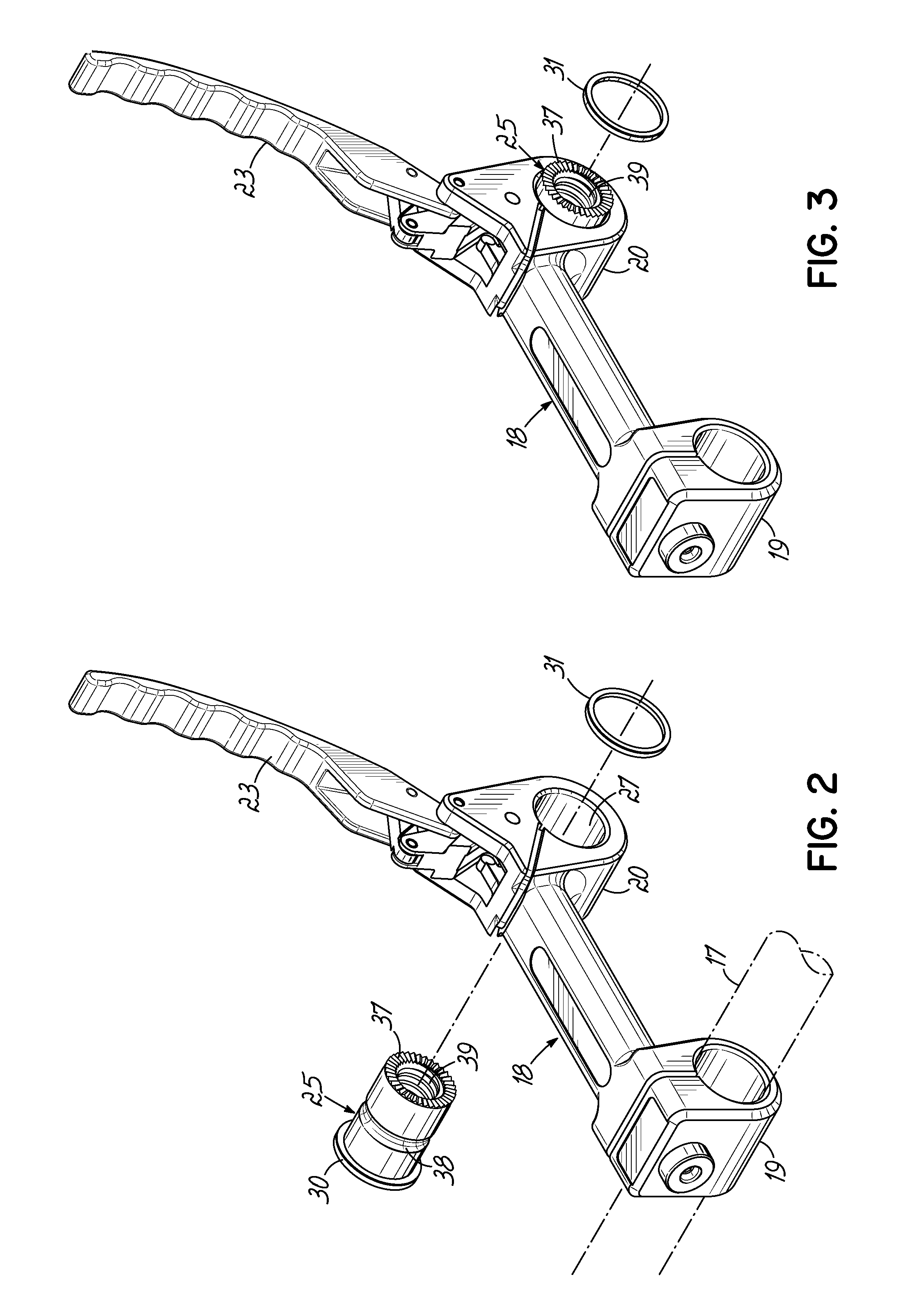Durable connector for base unit handle of a patient head support system
a technology for supporting systems and patients, applied in the field of patient head support systems, can solve the problems of permanent distortion of the bore, no longer fitting the post in the bore, damage to the base unit handle, etc., and achieve the effects of relaxing the tolerances of the structure, avoiding damage, and protecting the delicate surface of the bore from distortion and abrasion
- Summary
- Abstract
- Description
- Claims
- Application Information
AI Technical Summary
Benefits of technology
Problems solved by technology
Method used
Image
Examples
Embodiment Construction
[0032]FIG. 1 shows a head support system 10 for supporting a patient (head shown in phantom) via a skull clamp 12 at the end of a surgical table 14. According to the arrangement of components shown in FIG. 1, in addition to the skull clamp 12, the head support system 10 includes a base unit 16, which includes a crossbar 17 that spans between a pair of spaced connector legs 15, and a base unit handle 18. The legs 15 connect to the table 14 and support the crossbar 17. The base unit handle 18 has a first end 19 that connects to the crossbar 17 and a second end 20 that connects to a transition member 22. The transition member 22 operatively connects the skull clamp 12 to the base unit 16. In this example, the transition member 22 serves as an intervening member. Those skilled in the art will readily appreciate that one or more adaptors or transition members could be used as the intervening member, or members, for interconnecting the base unit 16 and the skull clamp 12.
[0033]The focus o...
PUM
 Login to View More
Login to View More Abstract
Description
Claims
Application Information
 Login to View More
Login to View More - R&D
- Intellectual Property
- Life Sciences
- Materials
- Tech Scout
- Unparalleled Data Quality
- Higher Quality Content
- 60% Fewer Hallucinations
Browse by: Latest US Patents, China's latest patents, Technical Efficacy Thesaurus, Application Domain, Technology Topic, Popular Technical Reports.
© 2025 PatSnap. All rights reserved.Legal|Privacy policy|Modern Slavery Act Transparency Statement|Sitemap|About US| Contact US: help@patsnap.com



